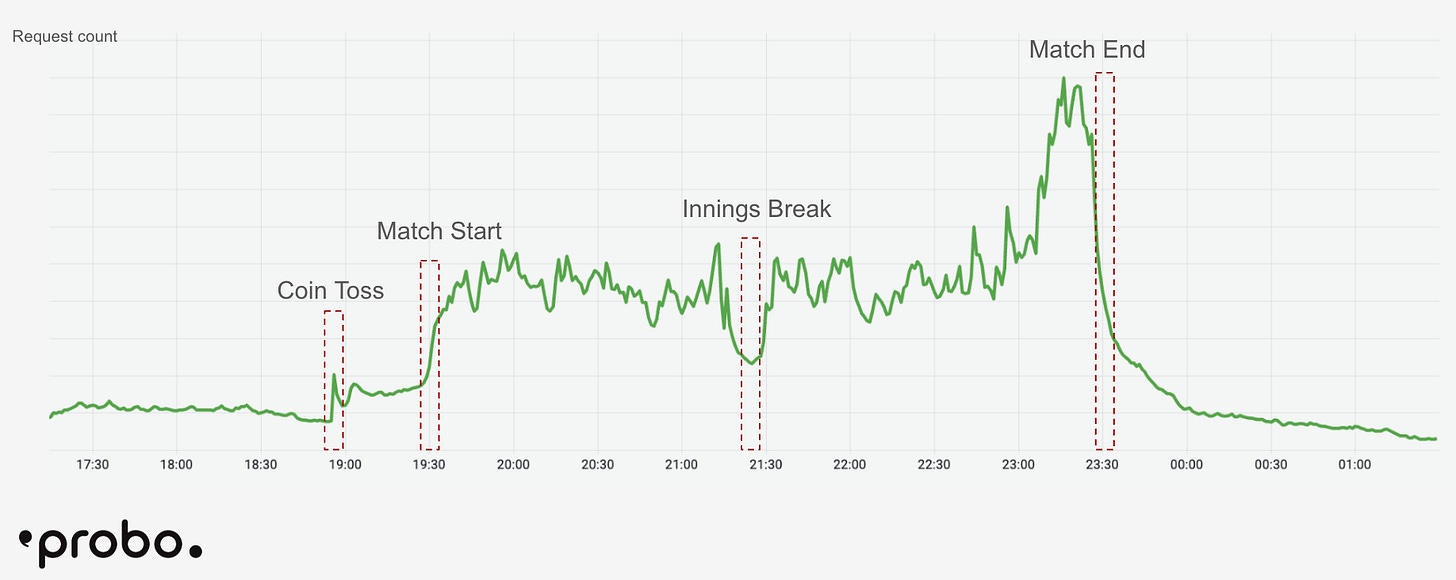Introducing the Cricket Scale Series
Lessons From Building Probo
In India, cricket isn’t just a sport — it’s a stress test for technology. Organisations connected to cricket, directly or indirectly, quickly learn that the excitement of a match translates into massive, unpredictable spikes in their systems.
During our journey at Probo, we experienced this first-hand. The start of an IPL match would bring sharp surges in traffic — far beyond what daily active user metrics or linear growth curves could prepare us for. A single ball could trigger millions of requests at once.
This is commonly referred to as cricket scale.
It was different from normal scale — spiky, sudden, and emotionally driven. Handling it required rethinking not only our infrastructure, but also our processes and how our teams operated.
This series is an attempt to document the lessons we learned along the way.
What to Expect
Part 1 → EC2 vs Kubernetes: picking the right scaling foundation
Part 2 → Redis: A Silver Bullet With a Cost
Part 3 → The Not-So-Technical Grind
While RMG applications may no longer operate in India, the challenges of spiky traffic patterns remain. Concert ticketing, IPO subscriptions, elections, or live streaming platforms all face their own versions of the cricket scale.
Through this series, I’ll share what worked for us, what didn’t, and how we built systems (and teams) that could survive the pressure of cricket scale.


